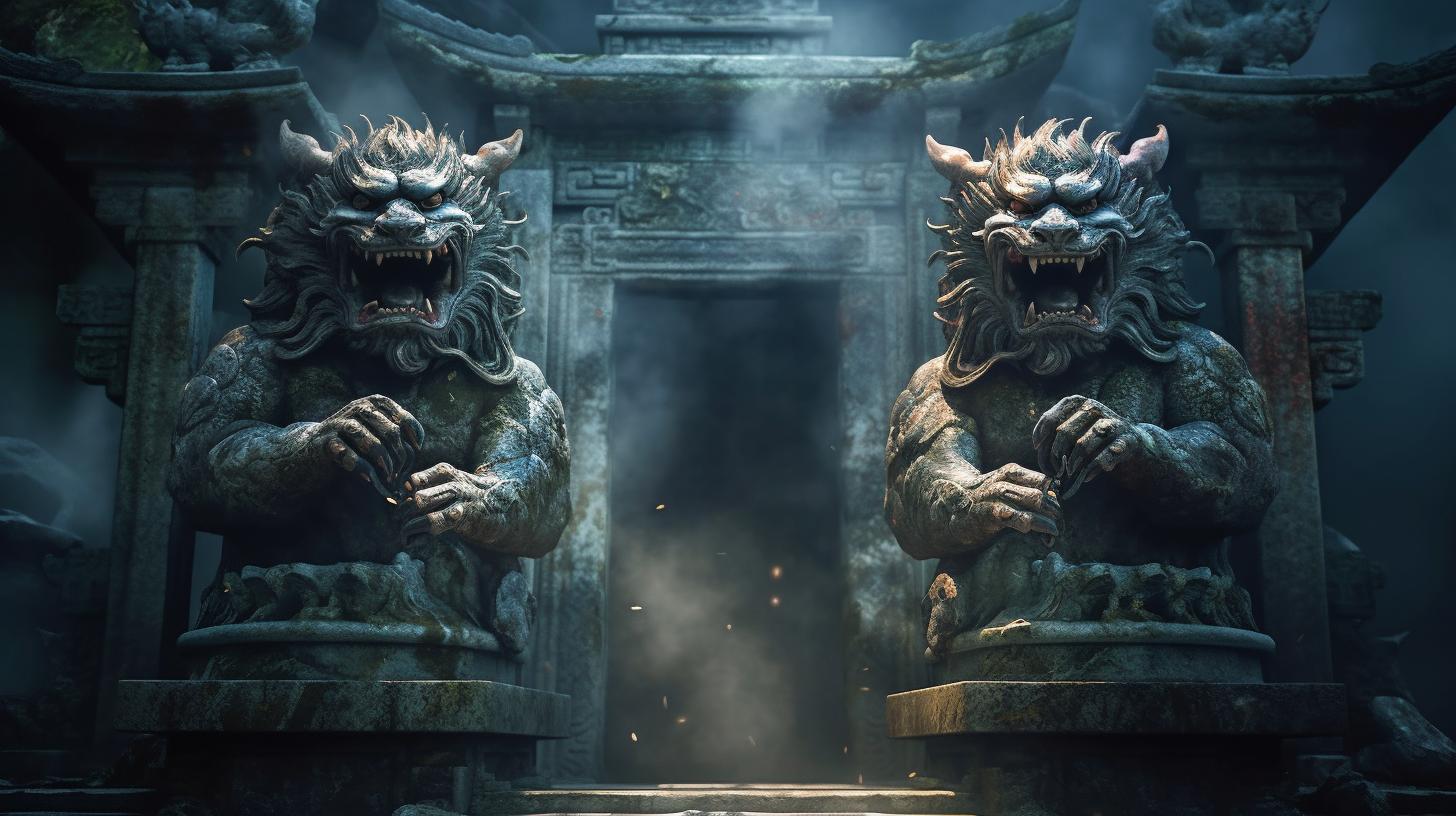Yes, there are Foo Dogs in Japan that serve as protectors and symbols of good fortune. In Japanese culture, Foo Dogs, also known as Guardian Lions, are believed to ward off evil spirits and bring prosperity to homes and temples.
These mythical creatures typically come in pairs, with one representing a male (yin) and the other a female (yang). Made of various materials such as stone, bronze, or wood, they are often placed at the entrance of buildings to guard against negative energies.
While their exact origins are unclear, Foo Dogs have been a popular decorative element in Japan since ancient times and continue to hold significance in the country’s aesthetics and beliefs.
Examining The Significance And Mythical Beliefs Surrounding Foo Dogs
Foo Dogs, also known as lion dogs or guardian lions, are not exclusive to China alone. These mythical creatures hold significance in Japanese culture as well. While the lion-like statues are widely recognized in Chinese culture, their influence reached Japan through cultural exchanges.
Foo Dogs are believed to possess protective qualities and are commonly seen guarding entrances and important structures. In Japan, these mystical creatures are referred to as Komainu. They are often depicted in pairs, with one open-mouthed and the other closed-mouthed, symbolizing the vocalization of “a” and “un,” respectively.
These statues are said to ward off evil spirits and bring good luck. The use of Foo Dogs and Komainu in both cultures showcases the rich mythological symbolism that is deeply rooted in their respective traditions.
Understanding The Aesthetic And Artistic Features Of Japanese Foo Dogs
Japanese Foo Dogs, also known as Shishi or Komainu, are iconic sculptures that can be found in various locations throughout Japan. These sculptures are characterized by their unique aesthetic and artistic features. They are often depicted in a ferocious manner, with fierce expressions and muscular bodies.
Japanese Foo Dogs can be made from various materials such as stone, bronze, or ceramic. The choice of material depends on the artist’s preference and the intended purpose of the sculpture. Each posture and expression of the Foo Dogs carries symbolic meanings.
For example, a Foo Dog with its mouth open symbolizes protection and warding off evil spirits. These sculptures are not only aesthetically pleasing but also hold cultural significance in Japanese history.
Exploring The Truth Behind Foo Dogs And Their Existence In Japan
Foo Dogs, also known as Lion Dogs or Shishi, have a rich history in Japan. Although they are commonly associated with Chinese culture, there is evidence of their existence in Japan as well. These mythical creatures have been depicted in various forms of Japanese artwork and sculptures.
While some may argue that their stylistic influences are primarily Chinese, the Japanese have distinctly incorporated their own cultural references into these sculptures. The interpretation and symbolism of Foo Dogs may also vary between the two countries. In Japan, they are often seen as guardians and protectors, representing strength and loyalty.
On the other hand, Chinese interpretations emphasize power and authority. Despite these differences, the presence of Foo Dogs in Japan highlights the cultural interplay between the two nations and the significance of these mythical creatures in both societies.

Credit: oldworldgods.com
Examining The Role Of Foo Dogs In Modern Japan
Foo Dogs, also known as guardian lions, have a rich history in Japan. These fierce-looking statues have become a staple in Japanese architecture and home decor. They symbolize protection and ward off evil spirits. Beyond their decorative purpose, Foo Dogs also play a significant role in festivals and rituals.
They are often seen at shrines and temples, standing guard and adding to the cultural ambiance. In recent years, Foo Dogs have gained popularity in pop culture and modern art. Artists and designers incorporate them into various mediums, bringing a sense of tradition and elegance to contemporary creations.
The enduring presence of Foo Dogs in Japan showcases their continued relevance and enduring cultural significance. Whether in ancient temples or modern homes, these revered guardians continue to captivate and inspire.
Conclusion
Foo dogs, also known as lion dogs or guardian lions, have a rich cultural significance in Japan. Despite their name, foo dogs actually originated from China and were later introduced to Japan. These mythical creatures have long been regarded as protectors against evil spirits and are often seen guarding the entrances of temples, shrines, and other important spaces.
While foo dogs are not native to Japan, they have become an integral part of the country’s architectural and cultural landscape. Their presence serves as a reminder of the strong cultural and historical ties between China and Japan. Whether you’re exploring the bustling streets of Tokyo or the serene temples of Kyoto, you’re likely to come across these magnificent stone guardians.
So, if you find yourself wondering whether there are foo dogs in Japan, the answer is a resounding yes. Simply look out for these majestic creatures as you embark on your Japanese adventure and appreciate the beauty and symbolism they bring to this fascinating country.
